What Is the Difference Between a Curtain Rod and a Drapery Rod?
TLDR;
A curtain rod is typically lightweight and designed for holding light to medium fabrics, while a drapery rod is more robust, meant to support heavier, often formal
window treatments like blackout or pleated drapes. The two differ in design, durability, and purpose—curtain rods are often decorative and casual; drapery rods are functional and structured.
Curtain Rod vs Drapery Rod: A Straight Answer and Why It Matters

Most people use the terms interchangeably—but they’re not the same. (If you're wondering about the fabric too, check out the Difference Between Curtains and Drapes for a deeper dive.) Curtain rods are made for lighter fabrics and casual window treatments, while drapery rods are stronger, more formal, and designed to carry heavy fabric. The difference isn't just aesthetic—it's functional, and choosing the wrong rod can lead to sagging, breakage, or a mismatched design.
At Simply Windows, we know that the difference between a curtain rod and a drapery rod can dramatically impact the look and longevity of your window treatments. Let’s break it all down so you know exactly what works best for your space.
What Is a Curtain Rod?
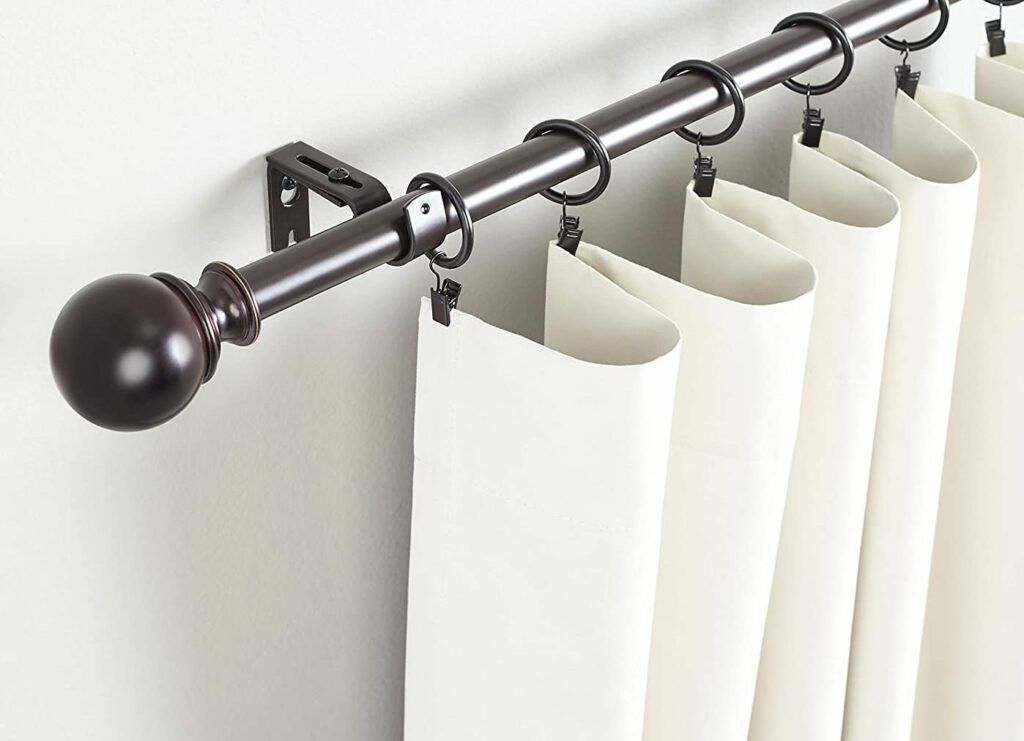
A curtain rod is a lightweight rod, typically mounted above a window to hang curtains.
Key Features of Curtain Rods:
- Material: Often made from plastic, lightweight metal, or wood
- Weight Capacity: Designed to support sheer or light-to-medium weight fabrics
- Style: Simple, decorative, and versatile
- Common Types:
- Tension rods: Ideal for temporary or rental situations
- Telescoping rods: Extendable and easy to install
- Cafe rods: Mounted midway up the window for partial privacy
Best For:
- Sheer panels
- Cotton curtains
- Tab-top or grommet-style curtains
- Everyday use in bedrooms, kitchens, or casual spaces
Visual Cues:
- Slim, often minimalist
- Typically exposed rod ends, often with decorative finials
What Is a Drapery Rod?
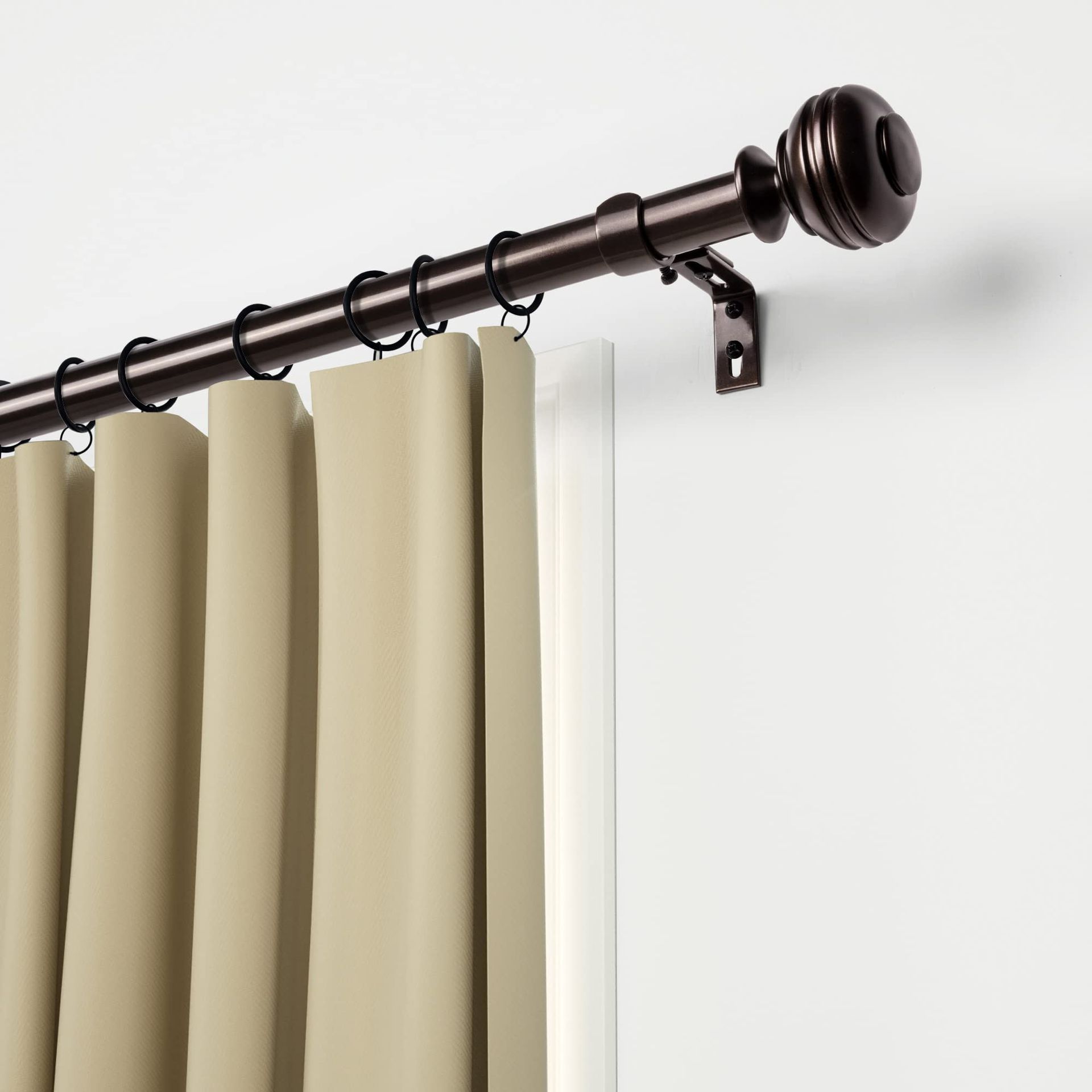
A drapery rod is a more robust window treatment rod made to support heavy fabrics, structured panels, and formal designs.
Defining Characteristics of Drapery Rods:
- Material: Strong metal, wood, or steel
- Weight Capacity: Engineered for heavier materials like velvet, brocade, or layered blackout drapes
- Mounting System: Often includes brackets and traverse systems for smooth movement
- Common Styles:
- Traverse rods: Operated via cord or pulley for pleated drapes
- Decorative poles: Thick rods with ornate finishes and finials
- Double or triple rods: For layered treatments (sheers, blackout, valances)
Best For:
- Heavy or lined drapes
- Formal dining or living rooms
- Drapes that require hooks or pleating tape
- Window treatments that span extra width or need insulation
Visual Cues:
- Thicker diameter, heavy-duty brackets
- May include motorized or cord-drawn mechanisms
Side-by-Side Comparison: Curtain Rod vs. Drapery Rod
Here’s a quick breakdown to help you clearly understand the difference between curtain rod and drapery rod:
| Feature | Curtain Rod | Drapery Rod |
|---|---|---|
| Material | Plastic, lightweight metal, wood | Solid wood, steel, wrought iron |
| Fabric Support | Light to medium | Medium to very heavy |
| Functionality | Basic hanging, decorative | Functional, supportive, advanced mounting |
| Rod Diameter | Narrow to medium | Medium to thick |
| Mounting Type | Wall or tension-mounted | Bracket-mounted, ceiling or wall |
| Best Use | Sheers, casual curtains | Pleated drapes, blackout, thermal |
| Cost Range | Low to moderate | Moderate to high |
| Style Preference | Minimalist, everyday | Classic, formal, luxurious |
Choosing the Right Rod for Your Space
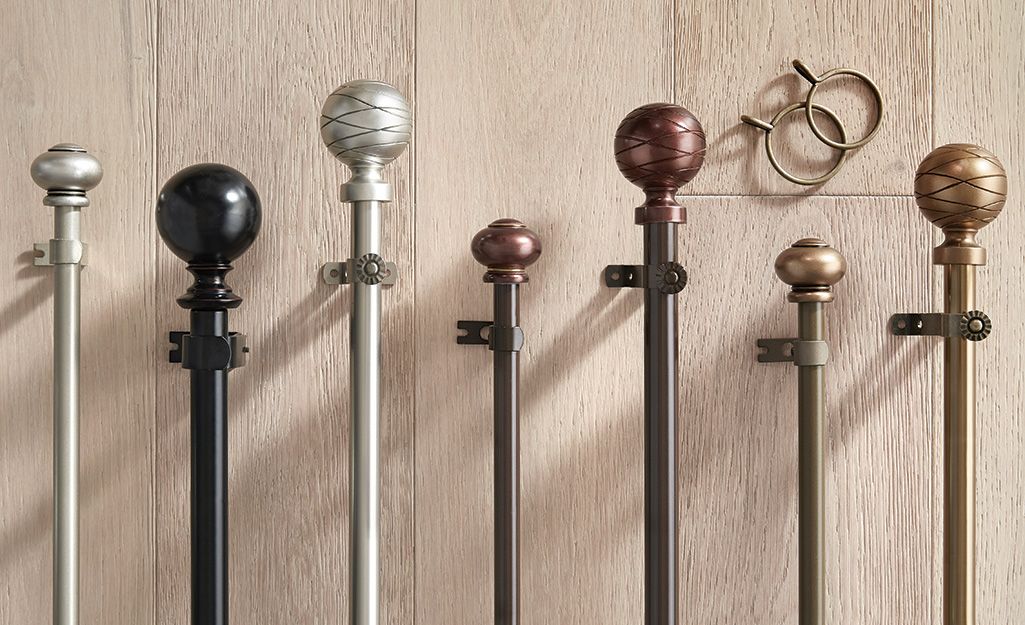
When deciding between a curtain rod and a drapery rod, consider these factors:
1. Fabric Weight
- Light: sheer panels, cotton →
Curtain Rod
- Heavy: velvet, layered, lined →
Drapery Rod
2. Room Function
- Casual or decorative room? →
Curtain Rod
- Formal, insulated, or blackout needs? →
Drapery Rod
3. Mounting Surface
- Drywall or tile with minimal drilling? → Curtain rods with tension or light brackets
- Large windows or ceiling mounting? → Heavy-duty drapery rods with anchors
4. Design & Style
- Want clean lines or minimalist design? → Curtain rod
- Seeking classic elegance or bold design? → Drapery rod with finials
Installation Tips for Curtain and Drapery Rods
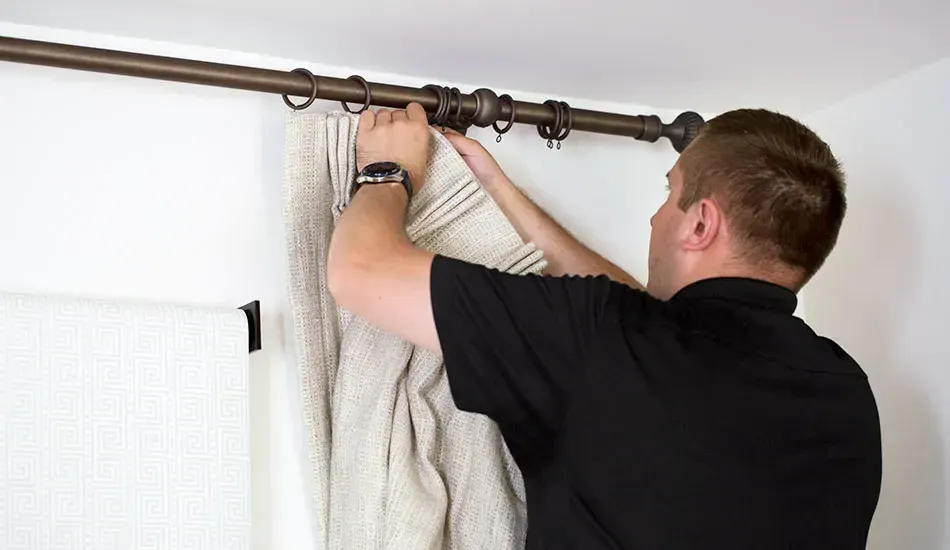
Proper installation ensures longevity and function.
Curtain Rod Installation:
- Use a
level to ensure straight hanging
- Secure
brackets 3-6 inches outside the window frame
- Mount at least 4-6 inches
above the window to give height illusion
Drapery Rod Installation:
- Use
anchors or
studs to support the weight
- Double-check
bracket spacing for traverse systems
- Use
ceiling mounts for dramatic drapery effect or when wall space is limited
Tools You'll Need:
- Measuring tape
- Level
- Drill and bits
- Anchors and screws
- Screwdriver
- Ladder
Maintenance Tips to Keep Rods Looking and Working Like New
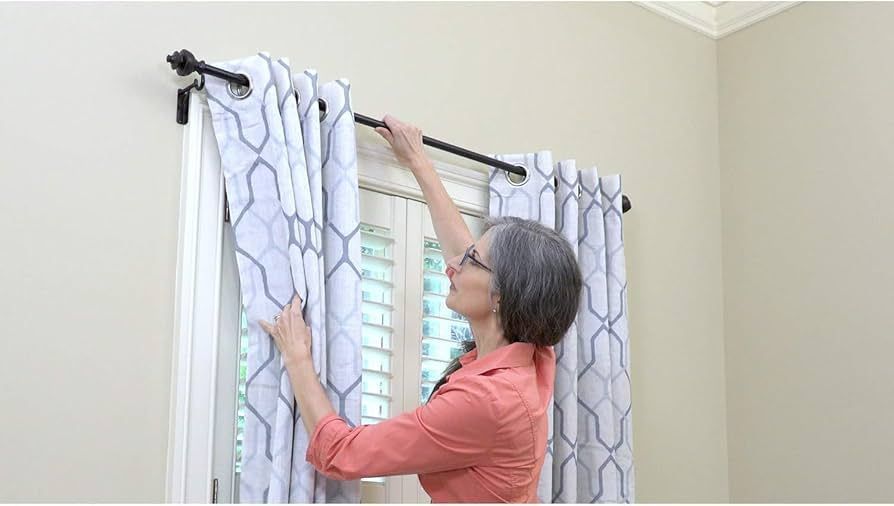
Curtain Rod Maintenance:
- Dust regularly with a microfiber cloth
- Check for loose finials or sagging brackets
- Wipe down with mild soap and water if metal or plastic
Drapery Rod Maintenance:
- Ensure traverse mechanisms glide smoothly
- Tighten hardware as needed to support weight
- Avoid moisture exposure—use rust-proof materials in humid areas
Common Questions: Drapery Rod vs. Curtain Rod
Can I hang drapes on a curtain rod?
Not recommended. Most curtain rods can’t support the weight of heavy drapes—over time, it can lead to bending or wall damage.
Are all curtain rods the same?
No. There are multiple types—tension rods, telescoping, decorative rods—all vary in strength and design.
Do I need special brackets for drapery rods?
Yes. Drapery rods require heavy-duty brackets, often with multiple support points for stability.
What rod should I use for blackout curtains?
Use a drapery rod—preferably one that allows for close wall mounting or layering with sheers to maximize light control.
How do traverse rods work?
Traverse rods have a cord system that opens and closes pleated drapes smoothly. Ideal for formal and functional designs.

